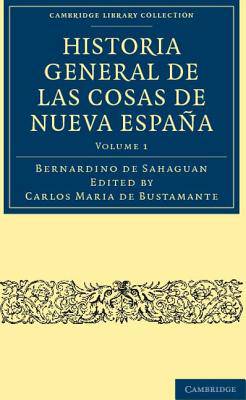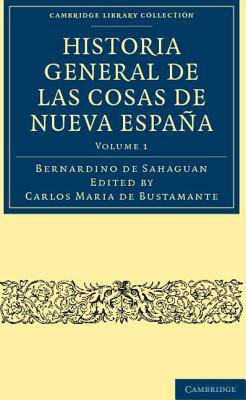
- Afhalen na 1 uur in een winkel met voorraad
- Gratis thuislevering in België vanaf € 30
- Ruim aanbod met 7 miljoen producten
- Afhalen na 1 uur in een winkel met voorraad
- Gratis thuislevering in België vanaf € 30
- Ruim aanbod met 7 miljoen producten
Zoeken
Historia General de las Cosas de Nueva España - Volume 1
Bernardino de Sahaguan
€ 78,95
+ 157 punten
Omschrijving
Friar Bernardino Sahagûn was in 1529 one of the first Catholic missionaries to the Aztecs. During his sojourn in Mexico he came to speak Nahuatl (the native language) fluently and to understand the Aztec culture, customs, religion and infrastructure intimately. He compiled the largest and most richly detailed record of the Aztecs and their history before the civilisation was wiped out by the Spanish conquest, and Sahagûn is sometimes considered 'the father of ethnology', as his study was the first to derive from the subjects' own point of view, through using native informants in his research. The work, written in 1540, was originally an illustrated manuscript of twelve books in a combination of Nahuatl and Spanish; this version, in Spanish only, was first published in 1829. Volume 1 covers the gods, their origins, the calendar of festivals and sacrificial events, and art and astrology relating to the Aztec religion.
Specificaties
Betrokkenen
- Auteur(s):
- Uitgeverij:
Inhoud
- Aantal bladzijden:
- 420
- Taal:
- Spaans
- Reeks:
Eigenschappen
- Productcode (EAN):
- 9781108025836
- Verschijningsdatum:
- 27/01/2011
- Uitvoering:
- Paperback
- Formaat:
- Trade paperback (VS)
- Afmetingen:
- 140 mm x 216 mm
- Gewicht:
- 530 g

Alleen bij Standaard Boekhandel
+ 157 punten op je klantenkaart van Standaard Boekhandel
Beoordelingen
We publiceren alleen reviews die voldoen aan de voorwaarden voor reviews. Bekijk onze voorwaarden voor reviews.











